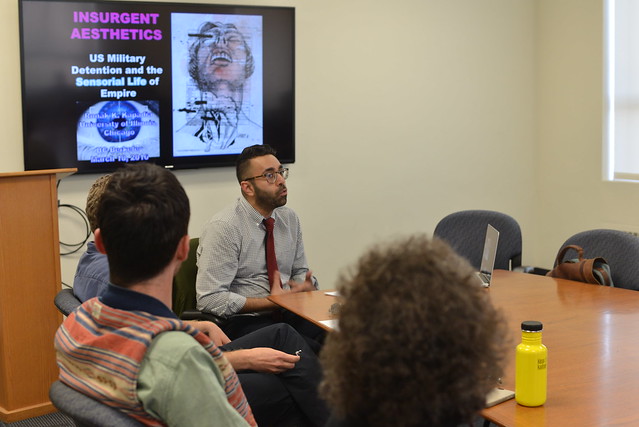Revisited: Insurgent Aesthetics

Ronak Kapadia, an Assistant Professor at the University of Illinois, Chicago, gave a talk on "Insurgent Aesthetics" on Friday March 18th. Kapadia discussed how the United States interacts with Muslim populations around the world, exploring how insurgent aesthetics utilize the torture archive as raw material for creative intervention, and in so doing, offer a more imaginative account of security and the sensorial life of empire. Kapadia noted how the United States has created an incredible archive of data, ostensibly in the name of transparency. However the vast amounts of data collected has a numbing effect on the audience. The data, in essence, becomes "cold" as the numbers and reports are ignored. Kapadia focused on how Arab, Muslim, and South Asian artists interact with the archives to restore the human element and transform "cold data" into "warm data." Warm data suggests that the information is full of the sensory metadata that makes it more accessible to an audience. These processes by Rajkamal Kahlin and Mariam Ghani explore the culture of acceptance that has developed around these issues, where Muslim men are absorbed into the system of US military torture and interrogation, and stripped of identity.

